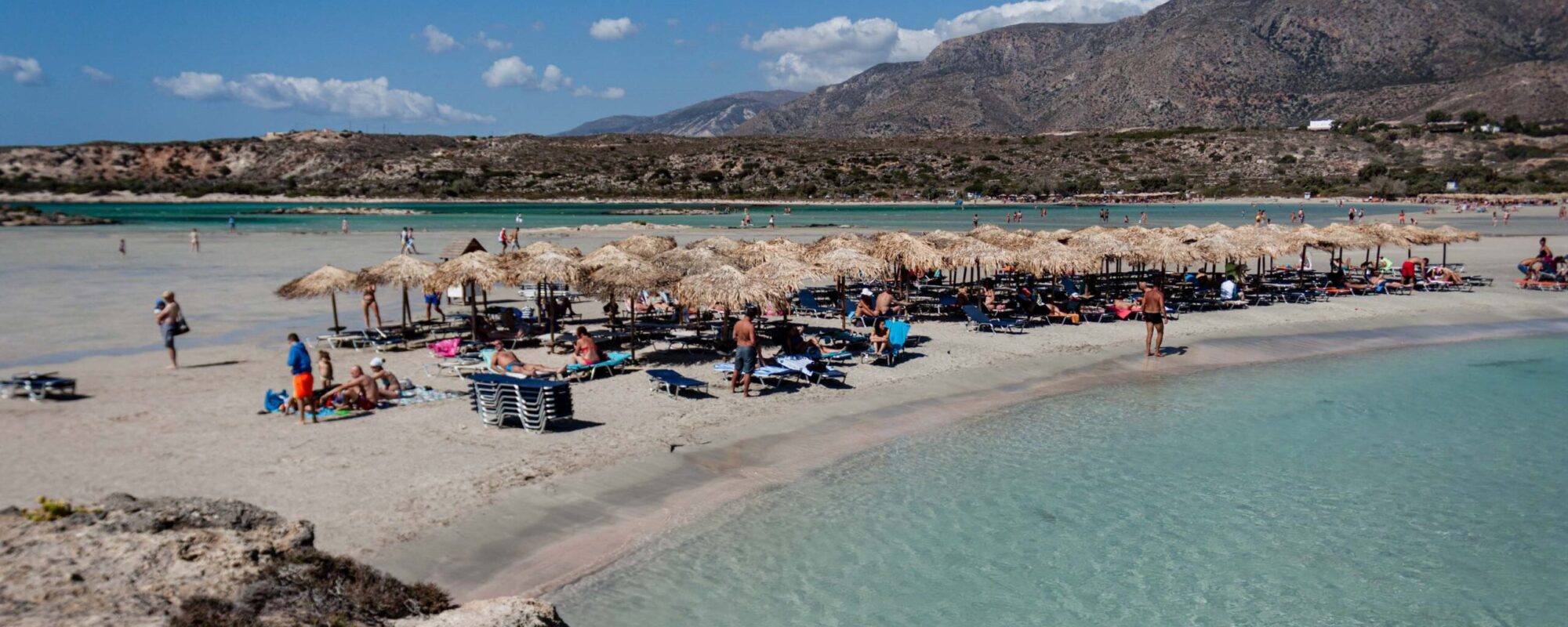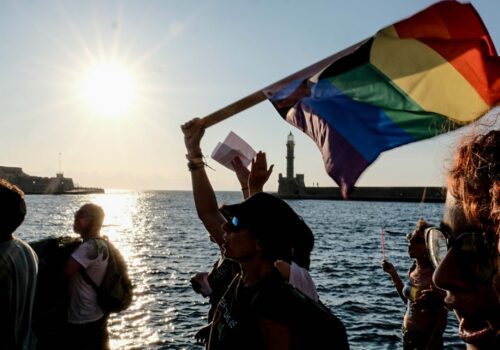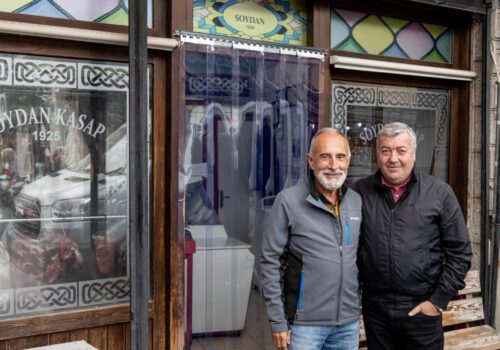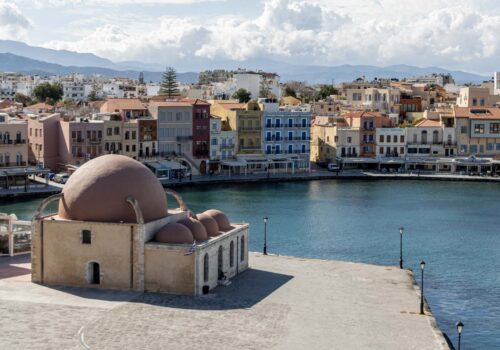CHANIA, Greece — On a windy day in early April, less than a month before the start of tourist season, the luxury resort Minoa Palace was still undergoing major renovations. The hotel lobby had the echo of an empty film set, its dark wood reception desk shrouded in white tablecloths. That day, workers were installing buffet counters in the main Elia Restaurant. An update to the 20-year-old restaurant and kitchen had begun after Christmas and was only half done.
Across the street in the Imperial Beach Wing, a 12-room expansion was underway. Wrapped mattresses lay stacked in the hallways for rooms still open to the Saharan dust blanketing Crete in a yellowish haze. Plate glass windows had yet to be installed, cardboard covered the floors and hanging metal frames waited to be fitted with 55-inch flat-screen televisions.
Outside, a man wearing two black trash bags as galoshes power-washed the blue-tiled walls and floor of a near-empty swimming pool. Even the sandy Platanias beachfront looked unkempt, covered in small stones, plastic bottle caps and pieces of driftwood. But George Mathioulakis, owner of Minoa Palace, seemed unfazed. “In the next 10 days, the municipality will send a machine to smooth out the beach and remove the debris,” the 41-year-old hotelier told me.
I appreciated the glimpse behind the polished touristic curtain, but as George led me through the resort, greeting all his workers by name, I also felt a bit anxious on his behalf, wondering how he and his team would be able to finish the renovations and get the resort into Instagram-ready state by its April 20 opening date. As we walked the property, he demonstrated his sharp eye, pointing out the furniture and textiles missing from the dining room, plastic panels in the pedestrian overpass that needed replacement and spots in the wooden patio that had to be revarnished. He didn’t seem too worried, though. In Greece, things are often done at the last minute, and perhaps as a former competitive cyclist, he thrived under pressure.
George’s father, a public works contractor, bought this plot in 2001, and the hotel opened the following year. It is located in Platanias, a bustling seaside resort town 10 kilometers west of Chania, the capital of western Crete. With its long, sandy beach, Platanias was among the first mass tourism centers in the region, popular among Scandinavians since the 1980s. Today, its main strip is packed with hotels that cater to package holidays.
The family opened Minoa Palace’s beach wing in 2008 and built a second hotel, the Euphoria Resort, in 2018. “The two hotels are quite different,” George told me. “Minoa Palace is mostly a bed and breakfast hotel, and its clientele has an average age of 55 or 60. Euphoria operates under an ultra all-inclusive concept (meaning all meals and beverages are included), which makes it more suitable for young families.” He wanted to create two distinct products that wouldn’t “cannibalize” each other but offered an authentic Cretan experience with local excursions and cuisine and high-quality Greek hospitality. An amateur violinist, George also founded Chamber Music Festival Chania and has invited musicians to play concerts at Minoa Palace since 2012.
Crete is one of Greece’s premier tourism destinations, and visitors have been flocking to the island since the 1960s. In his 1978 book The Greek Islands, Lawrence Durrell complained, “Tourism has swamped the island with summer sun-lovers—which has had an inevitable effect on prices, urbanization, and morals. The whole of the northern coast—or a good two-thirds of it—is turning itself into a playground, a place of summer habitation, for sun-hungry Nordics.”
With its pristine beaches and world-famous hospitality drawing some 30 million visitors per year, Greece’s tourism industry helped the country dig out of its decade-long financial crisis. Many US carriers now fly direct to Athens, and celebrities like the Obamas, Magic Johnson and George Clooney were all spotted on the islands this summer. Tourism revenue reached a record 18.17 billion euros in 2019, the year before the Covid pandemic, roughly 20 percent of Greek GDP. A National Bank of Greece report estimates revenue in 2023 could break that record, raking in 21 billion euros.
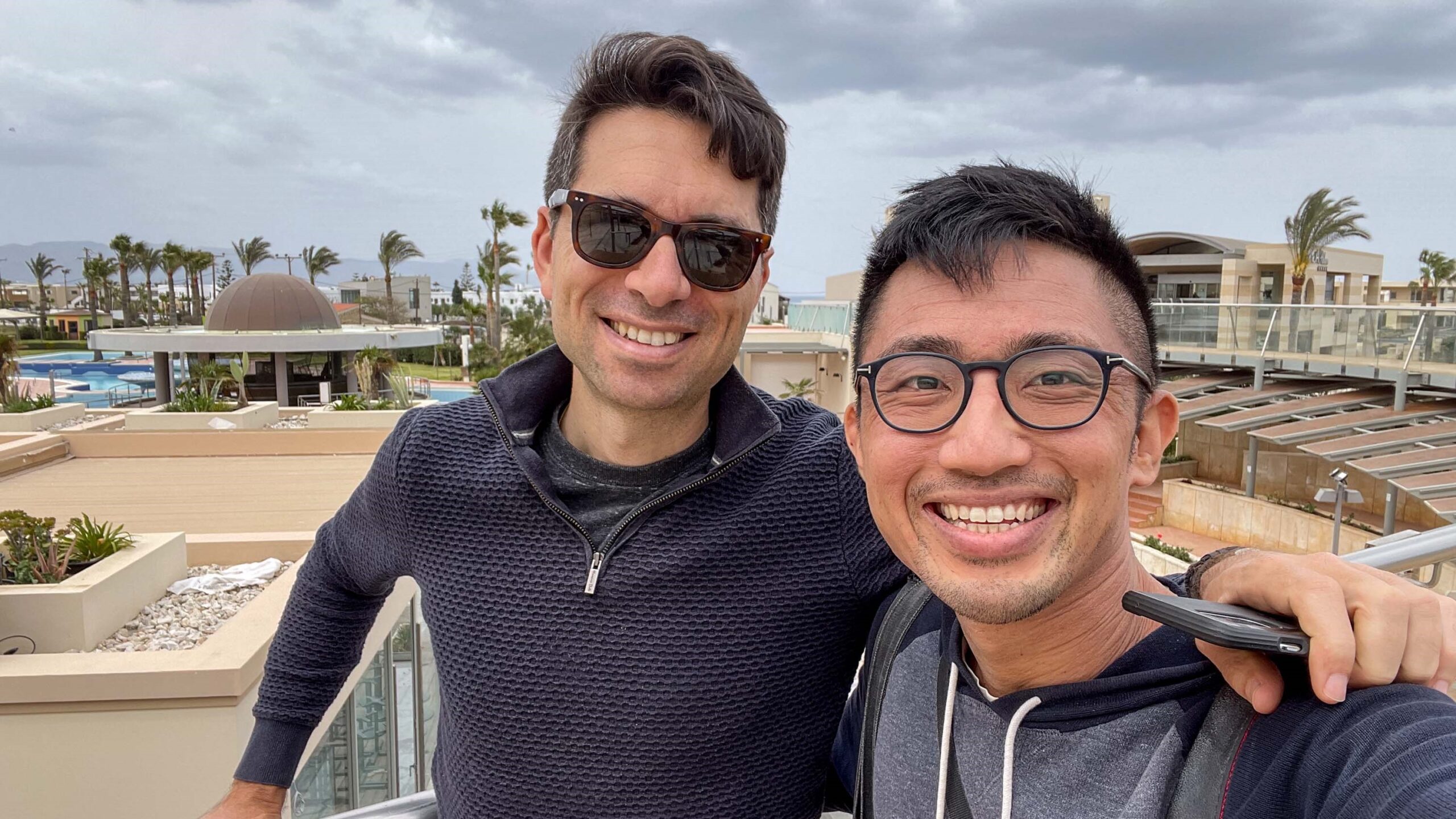
But tourism is a fickle industry with unintended, far-reaching effects on local communities from rent hikes and overcrowding to threats to natural environments and even Greeks’ ability to enjoy a beach or summer on the islands. As Greece hosts record numbers of visitors in the wake of the pandemic, I spoke with local hoteliers, tour guides and government officials to learn how the island was addressing these challenges. Could Crete shift away from its prevailing mass tourism mindset and create a more sustainable, environmentally friendly product? Perhaps, I discovered, but such efforts are still in their infancy and will require fresh ideas, hard work and difficult decision making to bring to fruition.
Tourism after Covid
Greece’s largest island, Crete hosts all levels of tourism from notoriously unruly young Brits drinking and clubbing until dawn in Malia, Crete’s party capital, to ultra-luxury resorts in nearby Elounda that draw celebrity clientele and can accommodate helicopters and megayachts. A growing number of refurbished estates like Metohi Kindelis, an organic farm on the outskirts of Chania, and even whole villages like Thalori Traditional Ecotourism Village in mountain-top Kapetaniana offer unique experiences for those seeking alternatives to seaside accommodations.
Crete’s April to October high season is largely defined by seasonal international flights to the island that begin in late March and run until the end of October. The number of visitors during that time has increased dramatically in recent years. Between 2013 and 2019, said Dimitris Michelogiannis, special adviser to the Crete Region, “we more than doubled the number of airport visitors, mostly due to new direct flights connecting Chania with other European destinations during the season.” Many shops, restaurants and hotels key their opening and closing dates to the schedule, creating the rhythm of intense, busy summers and quiet winters when locals recuperate, renovate and travel.
Tourism in Crete survived the pandemic better than many other parts of Greece. Due to the island’s size, people could rent secluded villas and effectively social distance while working remotely. Crete also improved its brand name as a “safe” travel destination by educating tourism workers in health protocols, according to Vice Governor for Tourism and e-Governance Kyriakos Kotsoglou. As a result, in the summer of 2021, while Greece as a whole recovered some 60 percent of its record 2019 tourism, Crete clawed back 75 percent. And in 2022, with most Covid restrictions lifted, the country earned 95 percent of its 2019 revenue, while Crete surpassed its 2019 figure by 5.5 percent, setting a new record.
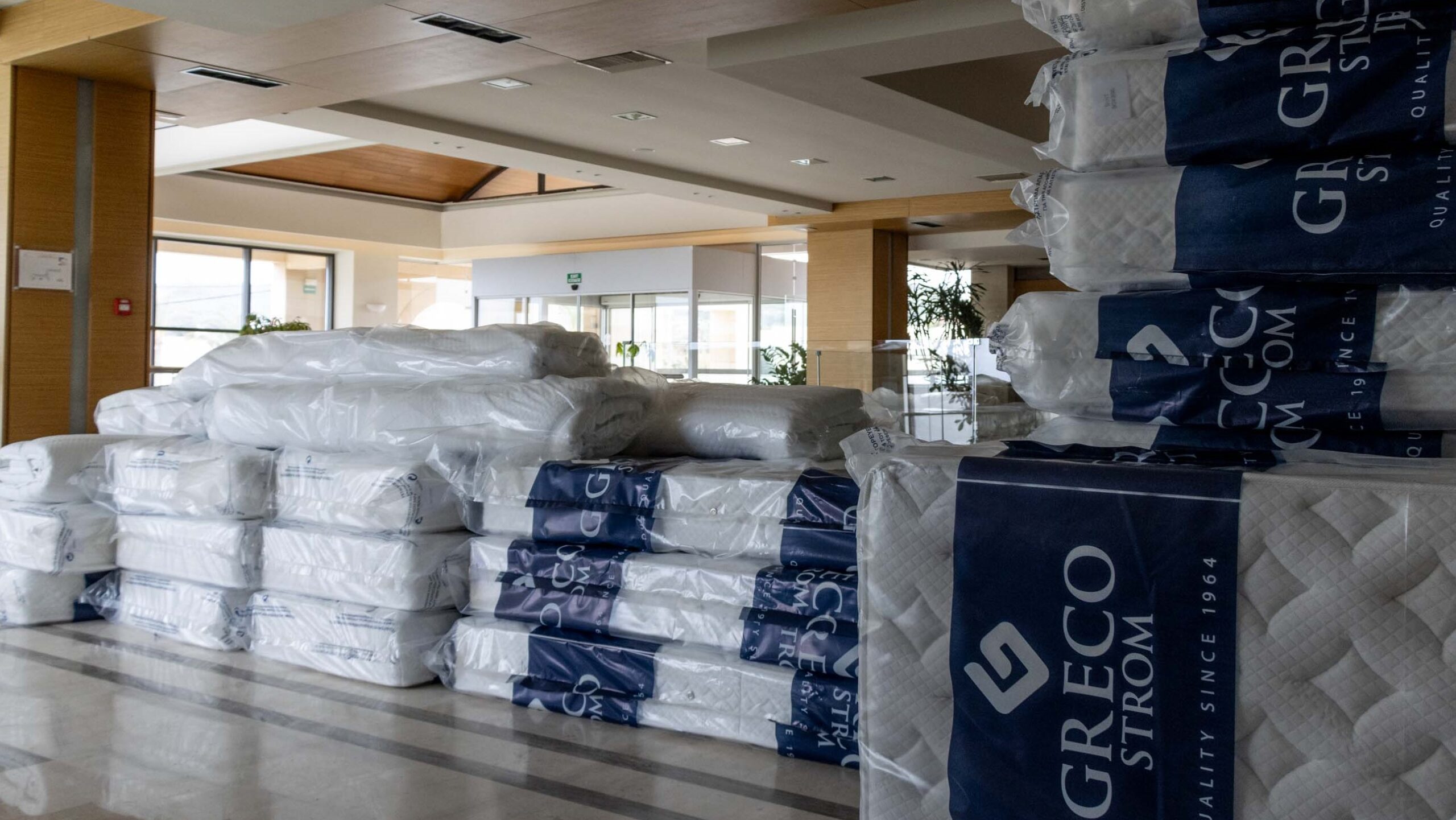
Despite the promising figures, George Mathioulakis admitted that the two pandemic years were “really tough.” In 2020, his family tried to limit its losses by opening only the more commercial Euphoria Resort from late June until mid-October. “The support we got from the government was really helpful,” he said. “We managed to survive.” The 2022 boom, which he attributed to people being “fed up with lockdowns” enabled the family to make up for the lost years.
Locals’ expectations that the 2023 season would be even better than last year have so far been disappointed, however. Despite an increase in airport arrivals, Kotsoglou predicted “less profitability overall” in an interview with News 24/7. Due to inflation and Europe’s recession, he said, visitors were tightening their belts, reducing the length of their stays and spending less outside their hotels.
In addition, staff shortages have continued since the pandemic, with maids and servers the most difficult positions to fill. George said that his hotels managed to operate with fewer staff last year, and when we spoke, he was trying to recruit staff from other parts of the country.
Intense weather phenomena due to climate change have also thrown the industry curveballs this season. In July, the Minoan palace of Knossos and other archaeological sites on Crete closed between noon and 5 p.m. when heatwaves raised daytime temperatures above 40 degrees Celsius. Wildfires on the islands of Rhodes and Corfu forced at least 21,500 people, mostly British and German holidaymakers, to evacuate resorts.
The costs of rebounding tourism
Not everyone is happy about the record numbers of visitors. Locals on the island of Paros staged demonstrations on three beaches in July, protesting the proliferation of umbrellas and sunbeds they felt were taking over the coastline, leaving them without space to lay their towels. While beaches are public space by law, the authorities lease sections to restaurants, hotels and bars with specific spacing limitations. However, residents complain that many businesses illegally expand beyond their licensed spaces, blocking access to beaches and forcing them to pay for private facilities. The so-called “beach towel movement” has spread to other Greek islands, including Chios and Crete, drawing more attention to the negative impacts of mass tourism and overdevelopment on Greek quality of life.

As arrivals on Crete surpass pre-pandemic levels, many Chania locals try to avoid the old town in the summer. It’s not hard to see why. Almost every building has been transformed into a hotel or Airbnb, parking is a nightmare and when as many as three cruise ships dock in town on the same day, the crowds can be stifling, putting pressure on local infrastructure.
I myself experienced how difficult it is to rent an apartment for the summer since most owners want to reserve their places for short-term rentals at well above local market prices. Unable to find an affordable apartment in Heraklion’s city center, I moved to the village of Archanes, 15 kilometers south. Friends in Chania have complained about the skyrocketing cost of living and of sometimes having to move out during the summer months. That can be especially difficult for students who need to stay in town to take exams, or teachers and doctors who can’t afford to spend 1,000 euros per month on rent. Tragically, the shortage of doctors and ambulances on crowded islands has resulted in at least nine likely preventable deaths this summer.
Overtourism also threatens famous Cretan beaches such as Balos, Elafonisi and Falasarna as well as cultural sites like Knossos and Spinalonga island, which receive thousands of visitors a day. “When a big boat arrives at Balos and people rush into the lagoon, you can almost feel the land trembling,” Michelogiannis said. Although improper management can result in reputational harm to sites—as when visitors post reviews about beaches being overrun with tourists or covered with trash—and even their eventual destruction, the authorities have been reluctant to limit daily visitors directly, fearing the measures would cause their constituents to lose money.
“We don’t have anywhere in Greece, neither for cultural sites nor natural sites, any kind of sustainability policy,” Michelogiannis said when we spoke in April. “Everyone’s promoting the sites, but no one has ever thought, ‘Okay, what do we do if there are too many people?’” In most cases, the authorities have not collected basic visitor traffic data that would be a prerequisite for any sustainability policy. Beginning in September, however, the Culture Ministry announced it would limit Acropolis visitors to a maximum of 20,000 per day with hourly entry caps. There is hope other sites will follow suit.
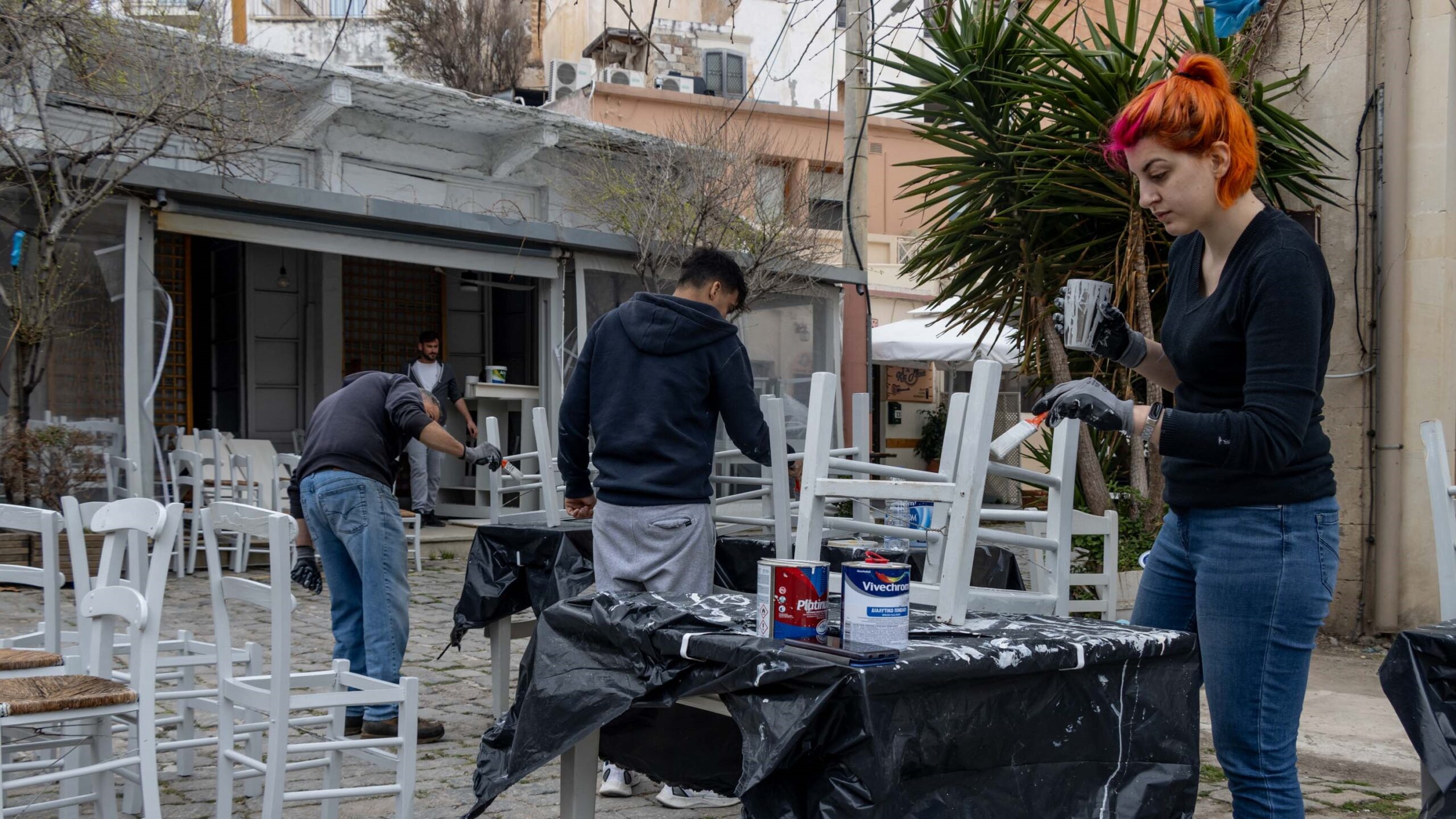
Furthermore, amid rising prices and the shift toward high-end tourism, many Greeks can no longer afford a Greek summer holiday—the beloved tradition of unwinding for weeks at a beautiful beach on a shoestring budget, counting one’s swims. Greeks see summer as a birthright and their connection to the land as fundamental to their identity. But if trends continue, they may soon find themselves priced out.
For those reasons, the short-sighted, “single-minded focus of maximizing visitor numbers no longer makes sense,” Oxford Professor of Government Stathis N. Kalyvas wrote in an analysis for Kathimerini newspaper. It seems that comprehensive, long-term planning and good management is essential to ensure quality tourism over quantity, protecting heritage sites and even Greeks’ way of life.
Buy-in from locals is important for that. A friend who works as a tour guide told me cruise companies usually plan their itineraries three years in advance. “As if the Greek government could do that!” she said, laughing. “Ideally, they should allow just one ship a day, but no one’s going to say no to more tourist money now.”
The Chania authorities admit that so far, social media has done all the work for them. Romantic images of the old harbor with its lighthouse and the prefecture’s jaw-dropping beaches, shared online by thousands of tourists, continue to draw crowds. Indeed, when I finally found the city’s inconspicuous tourist information office, I was shocked to receive little more than a map of the center. In Heraklion, by contrast, I received a thoughtfully designed packet filled with maps of the region, cultural routes through nearby villages and a guide to the city’s Venetian gates. The eastern town of Agios Nikolaos provides multilingual maps and guides highlighting beaches, outdoor activities and religious sites, while nearby Sitia welcomes yachts with local olive oil, honey and tea as well as a comprehensive guide to its UNESCO Global Geopark. If Chania wishes to guide the development of its tourism product, a more active approach with better management and considered communication seems necessary.
A more sustainable tourism strategy
What is the Crete Region’s tourism strategy? How does it plan to alleviate overcrowding on the island’s northern coast? Vice Governor Kotsoglou told me the regional government is pursuing a policy of expansionism, opening up the “space, time and type of tourism” on Crete. That means promoting destinations in the Cretan hinterland or endochóra, working to attract visitors year-round and diversify from the sun-and-sea model. “The mass tourism model will always account for 70 to 80 percent of our visitors, but we’re trying to develop alternative experiences as well,” he said. “By this, we mean work and wedding tourism, we mean religious pilgrimages, we mean museums, we mean rural and ecological tourism, all of which Crete has the potential to provide.”
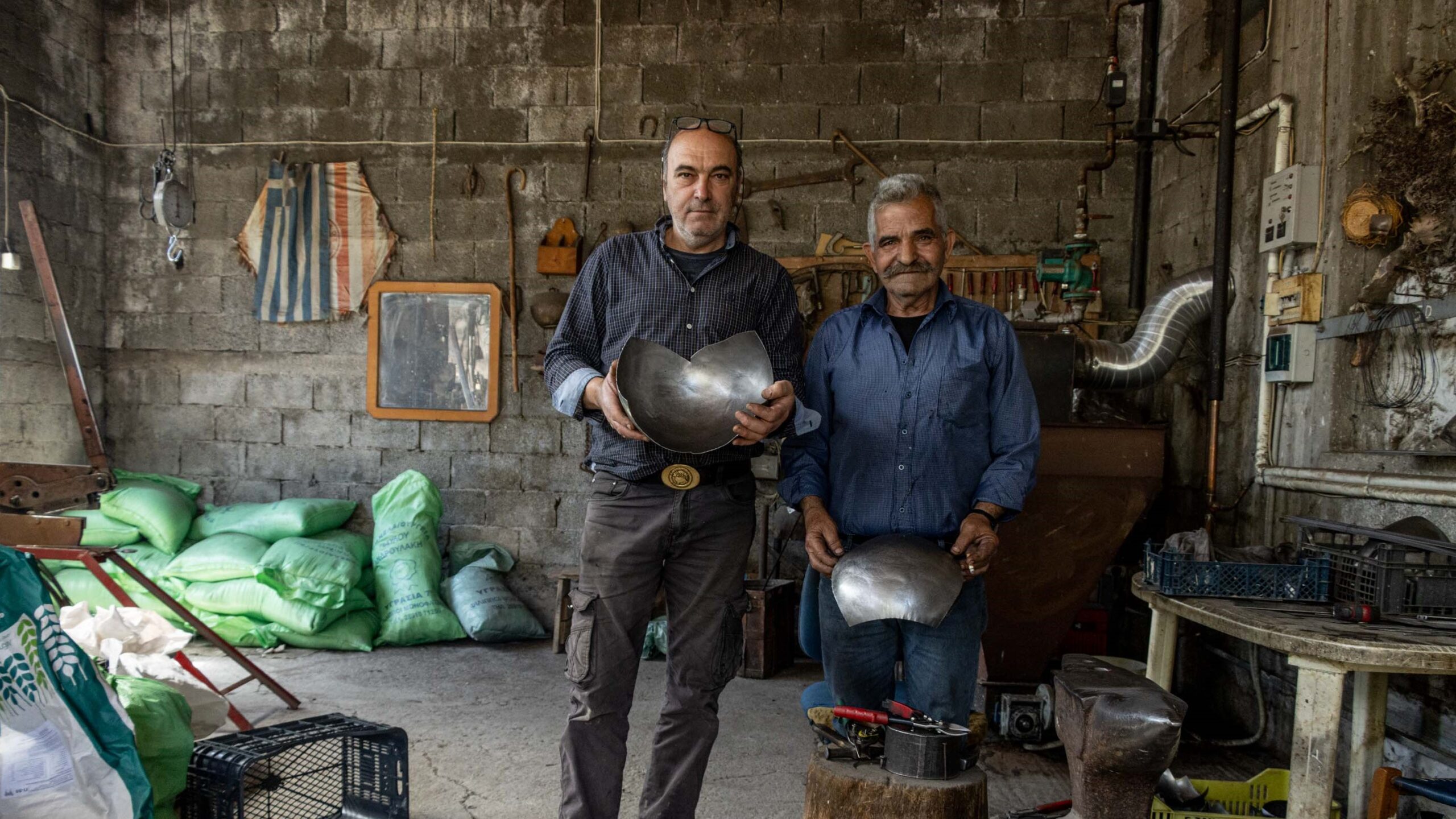
The regional government has published several stunning hardcover books over the past year to promote the island. They include the turquoise and azure volume Crete by the photographer Marina Vernicos, which highlights the island’s landscapes, especially its beaches in all their seductive, sun-drenched glory.
Another beautifully photographed and designed book, Handcrafted Crete by the travel writer Isabella Zampetaki, serves as an alternative tourist guide to Crete, showcasing the island’s traditional crafts and local makers. Michelogiannis, who gave me a copy of the book to assist with my research, said Zampetaki traveled all over the island for two years in search of artisans whose work captures the history, authenticity, passion and skill that abound in the endochóra. I have since visited many of the featured craftspeople: I bought shepherd’s bells for my wedding from Minas Milliarakis and Yiannis Parasyreis’s workshop in the village of Ano Asites, and when ICWA executive director Greg Feifer visited me in April, we had our best meal at Peskesi Farm on an olive tree-covered hillside near Heraklion.
Another regional initiative is Chania Trails: a network of over 70 routes and 700 kilometers of hiking trails that is gradually being implemented in six municipalities of Chania prefecture. The 1.5 million euro project is a collaboration with the social co-operative enterprise Paths of Greece, which specializes in bringing old footpaths back to life and has organized trail networks in the regions of Sifnos, Serifos, Messinia and Prespes.
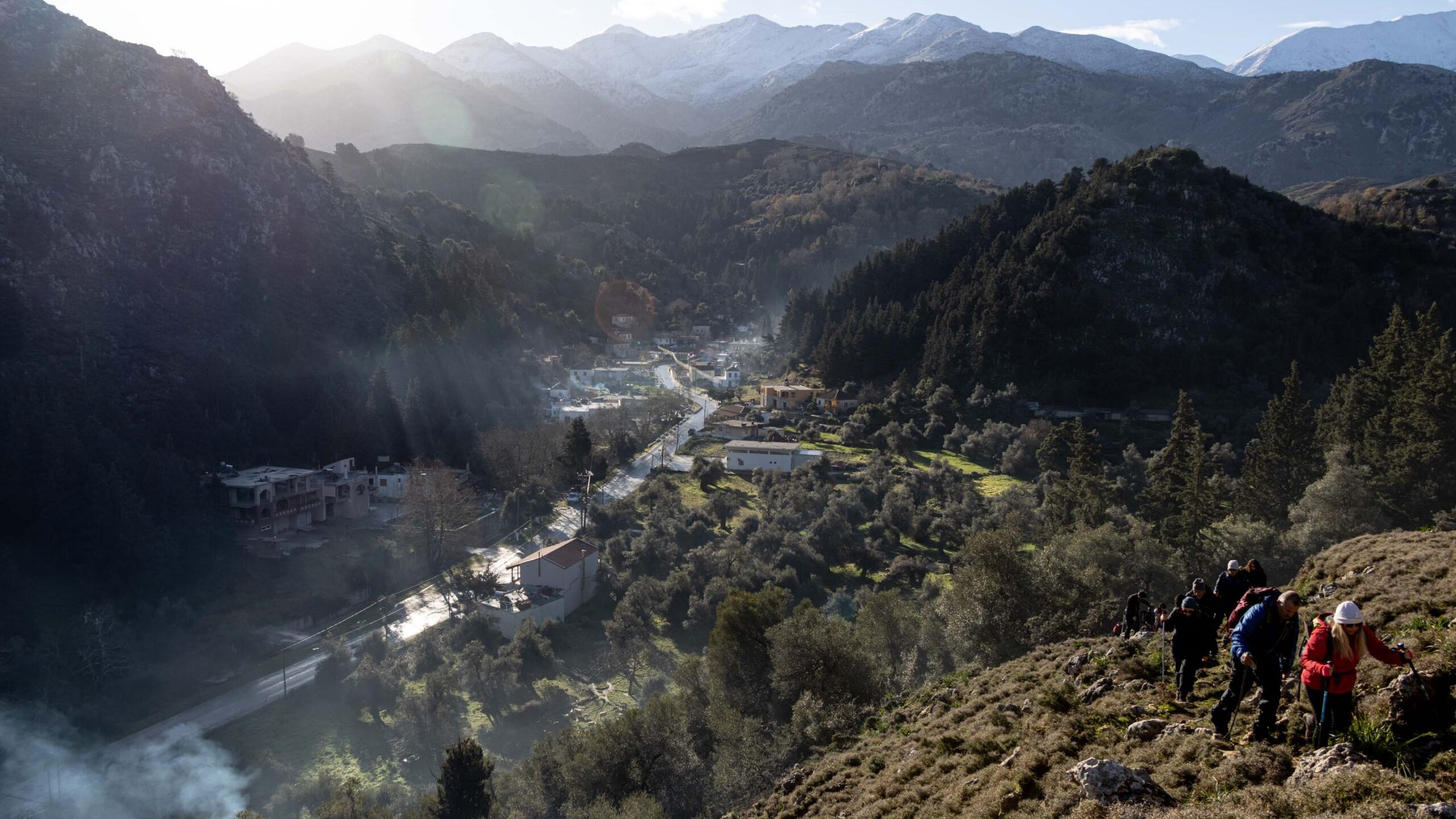
The creation of Chania’s network involved over 120 hours of interviews with locals for guidance and includes paths like the Aptera trail that have existed since the Minoan period (3000 to 1100 BCE) and a well-preserved Roman road linking the villages of Elyros and Sougia. It began with seven paths around the city of Chania in 2020, and 12 more paths in the Apokoronas municipality were completed this summer.
While living in Chania, I hiked six of the municipality’s seven paths and found them well-marked with red and white blazons and wooden signposts that indicated the time and distance remaining. Elegant digital trail maps available free on Avenza Maps enabled me to locate myself while offline, so I always felt safe even when I hiked alone. The diversity of the trails also impressed me. The three gorges and three mountains they traverse highlight the intense contrasts of the Cretan landscape and lead to forts, monasteries and churches. I’m looking forward to starting on the Apokoronas trails, which Michelogiannis said offer more family-friendly options and connect multiple cultural sites.
This year, the Crete Region has also been working to promote four natural environments that have earned distinction as UNESCO sites: the Samaria gorge and Asterousia mountain range, which are included in the World Network of Biosphere Reserves, and the Global Geoparks of Psiloritis and Sitia. “The UNESCO designation is the greatest brand name a region can have,” Kotsoglou said. “We’ve developed these sites, and now someone can visit all four destinations.”
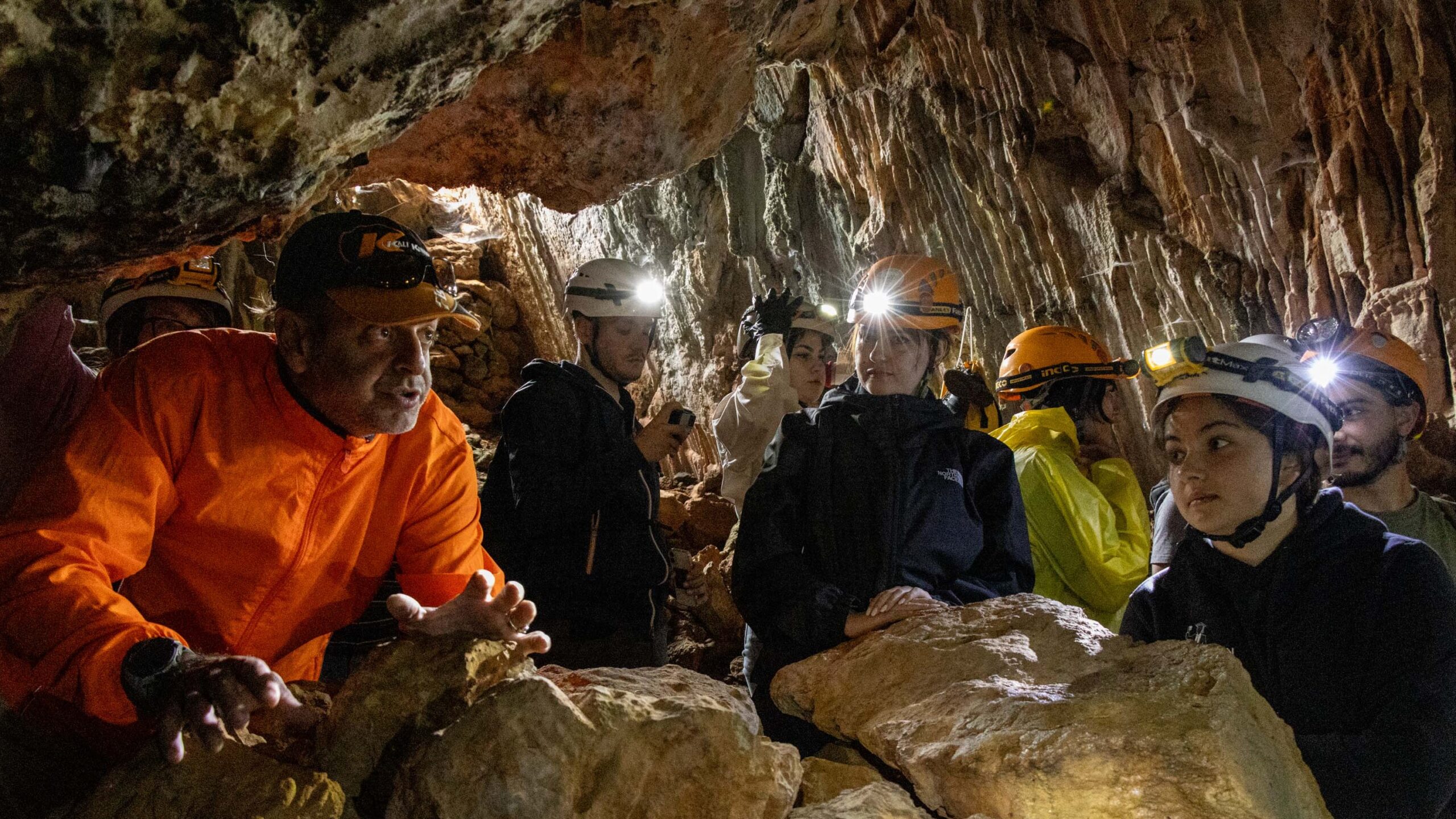
With the newly published photography book UNESCO Sites in Crete as my guide, I began exploring the four regions. Asterousia, a southern range of limestone mountains that plunge to secluded coves on the Libyan Sea, was nearly in my backyard. It was once an important center of monasticism on the island, and one can still visit cave cells where hermits lived and worshiped. My husband Andreas and I drove two hours on a winding dirt road to the remote Monastery of Panagia Koudouma and watched the sun set from Kofinas peak, the highest in the range at 1230 meters, while vultures wheeled overhead.
Exploring the Sitia UNESCO Global Geopark
In planning a custom safari with Pavlos Kapetanakis, co-owner of the excursion company My Sitia Secrets, I said I wanted to visit places in the Sitia Geopark I’d never be able to reach on my own. He told me to leave the rest up to him, so I was quite pleased when he picked me up at 8:30 a.m. in a black Mitsubishi pick-up truck that could tackle even the roughest mountain roads.
The truck, it turned out, was essential for where we were headed. We bounced over rocky, deeply rutted dirt roads to Liopetro or “Stone Lion” Fort, a hilltop Venetian fortress built in the early 17th century to shelter Sitia residents in the event of war with the Ottomans. We visited the mushroom-like sandstone formations of Agioi Pantes. We drove past herds of goats, my door rattling in its frame, through olive groves and dwindling villages to the Venetian fortress Monte Forte, which controlled the valley to the south. We descended into Vreiko cave and explored two of its caverns, clinging to a gritty rope as our boots searched for purchase on the damp cave floor. Far underground, we examined a stalagmite where generations of visitors had carved their names. Our final stop was the abandoned settlement of Andromili, where beside a carob tree, we admired the frescoed church of the Holy Apostles, constructed in 1415. The whole day, we saw maybe four or five people: shepherds, farmers and villagers.
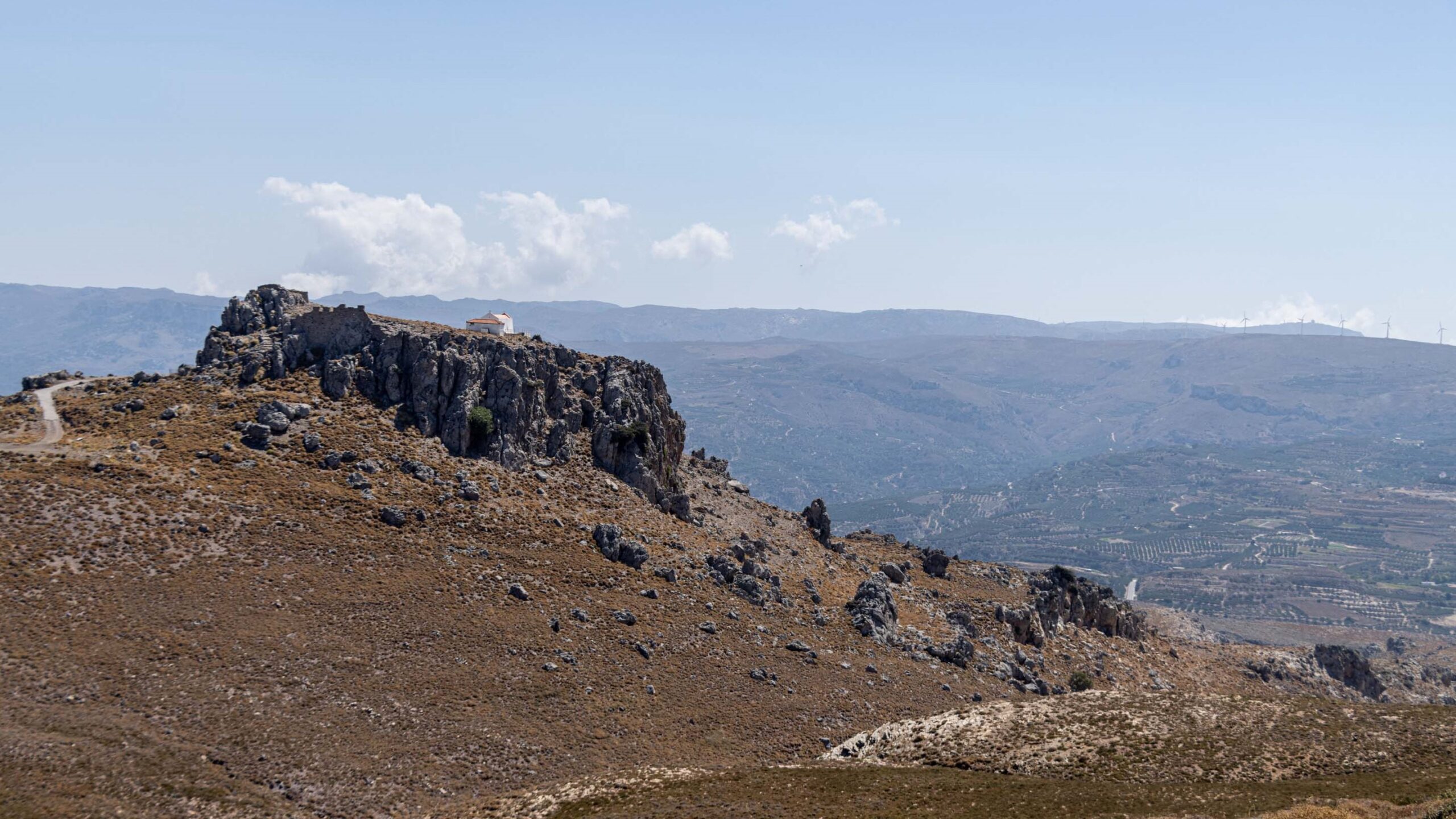
Pavlos is a gifted storyteller, a volunteer firefighter and olive oil producer with vast knowledge of the region’s Venetian history. He showed me around the geopark with pride, sharing stories about gorges in which he went canyoning, kayaking and climbing trips he’d led, memories from his boyhood among the olive trees and the stories of monasteries and churches we passed. Safety was his top priority, and as the truck bumped along, he often checked in to make sure I was enjoying myself and staying hydrated.
The Crete Region’s catchphrase is “Sense the authentic.” That, I think, is where the future of tourism on the island lies. Not just by offering genuine experiences and world-renowned hospitality but in a concerted effort to respect and preserve Crete’s authenticity—the island’s ecosystems, customs and cultural heritage. “We did not inherit this land from our grandparents but borrowed it from our children,” Kotsoglou said. While touring untouched parts of Sitia and learning its history from Pavlos, I saw myself not as a consumer, but as a guest in his home. And with this understanding, the flip side of Greek hospitality, comes an urgent responsibility.
Top photo: Southwestern Crete’s Elafonisi beach, famous for its pink sand, in August 2017

